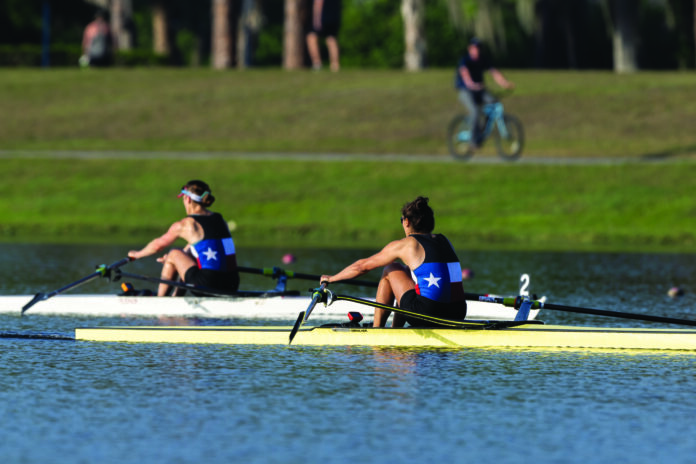BY BILL MANNING
PHOTO BY LISA WORTHY
To continue reading…
This article is exclusively for Rowing News subscribers. For as little as $5 a month, you can get access to the best quality, independent reporting on all the issues that matter to the North American rowing community.
Already a subscriber? Login
For most coaches, the challenge when teaching rowers is where to begin. Troubleshooting a rower’s stroke helps detect what’s actually going on and what can be improved. Though the stroke cycle is continuous, focusing on its elements generally makes the whole better. A handy hack for coaching better is looking at the stroke with “the P’s” in mind.
Posture. “Posture proceeds performance,” former Boston University men’s rowing coach Rodney Pratt preached. Rowers should sit on their seats square and level, weight distributed evenly left to right, neither too far forward nor too far back. Their hips should be elevated (lift the belly button) so their pelvic bones—the sit bones—are the primary point of contact.
Rowers should be able to sit in this position comfortably for an extended period. If not, ask them to put their hands on the gunwales, lift off the seat gently, and sit back down. This will help center their weight on the seat.
Next, check that the bottom of their feet connect to the foot stretchers. Engaging with the foot stretchers balances the boat and creates the potential for power.
Rowers should keep the oar collar(s) firm against the oarlock(s) through the entire stroke cycle. This light lateral pressure keeps the lever engaged against the fulcrum of the pin, thus balancing the boat and making the drive more effective.
Preparation. Everything in the stroke cycle depends on what’s done before. The recovery begins with rowers separating the handle from the body and forming a rectangle—outstretched arms making up two sides, shoulders and handle the other two. Look for the pivot from the hips, the pelvic tilt, being low in the torso and early on the slide. Too often, body weight doesn’t shift forward because rowers are reaching from their shoulders and rounding the upper back. After pivoting, the body is positioned and remains patient as the knees rise. The recovery is sequential but overlapping. It should position rowers so they’re poised to reverse direction. Pause drills reinforce proper preparation.
Pushing with a firmly braced body initiates the change of direction. While pressure on the foot stretchers and handles should be equal, emphasize pushing. The tendency to pull rarely needs reinforcing, but the need to push always does. Just like the recovery, the drive should be sequential but overlapping. This is achieved by the trunk’s prying open against the continued push of the legs. The pertinent mantra: “Push…push pry…push to prevail.”
Rowing with greater resistance—meaning a heavier boat—helps teach prying against the leg push. In a single, hold the oars closer to the collars, and in sweep, row inside-arm-only to achieve this effect. Rowing a team boat with some sitting out works, too.
Pulling seemingly comes next, but too often pulling replaces pushing rather than adding to it. While the arms draw the handle toward the body, this depends on continued pressure being applied through the shoes (every action has an equal and opposite reaction). If the finish is weak, the problem almost always is insufficient pressure on the feet rather than too little on the front of the handle. Maintain posture and keep pressing.
Power properly applied cures most problems. Rowing powerfully with the feet on top of the shoes rights many wrongs. “More power!” is often the best coaching advice one can give.

